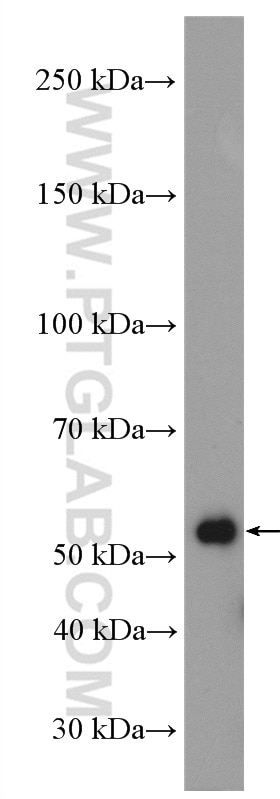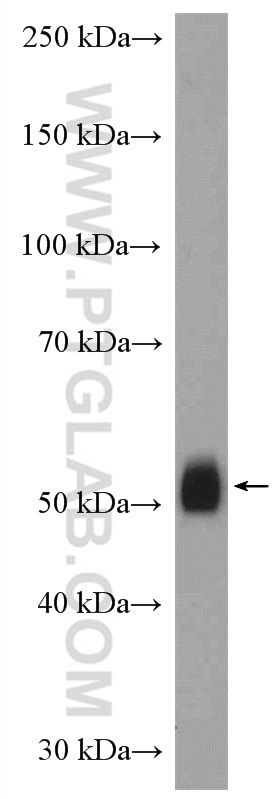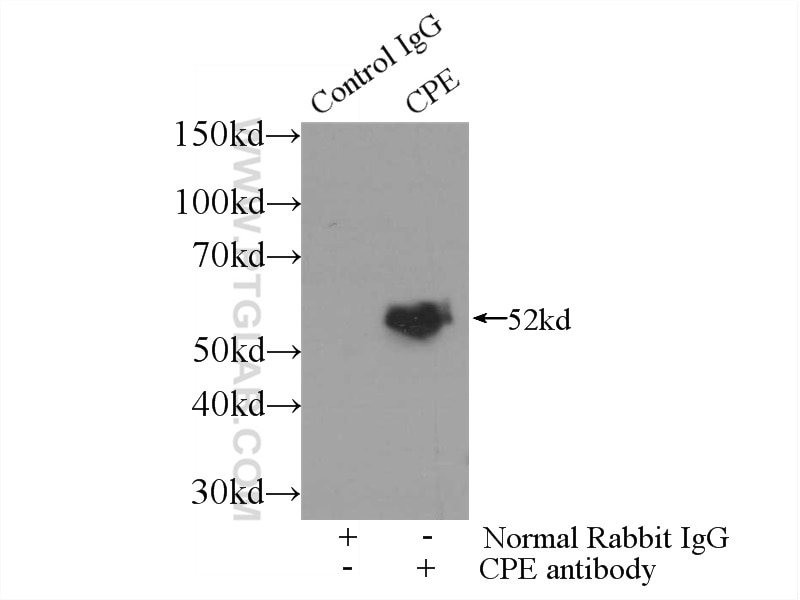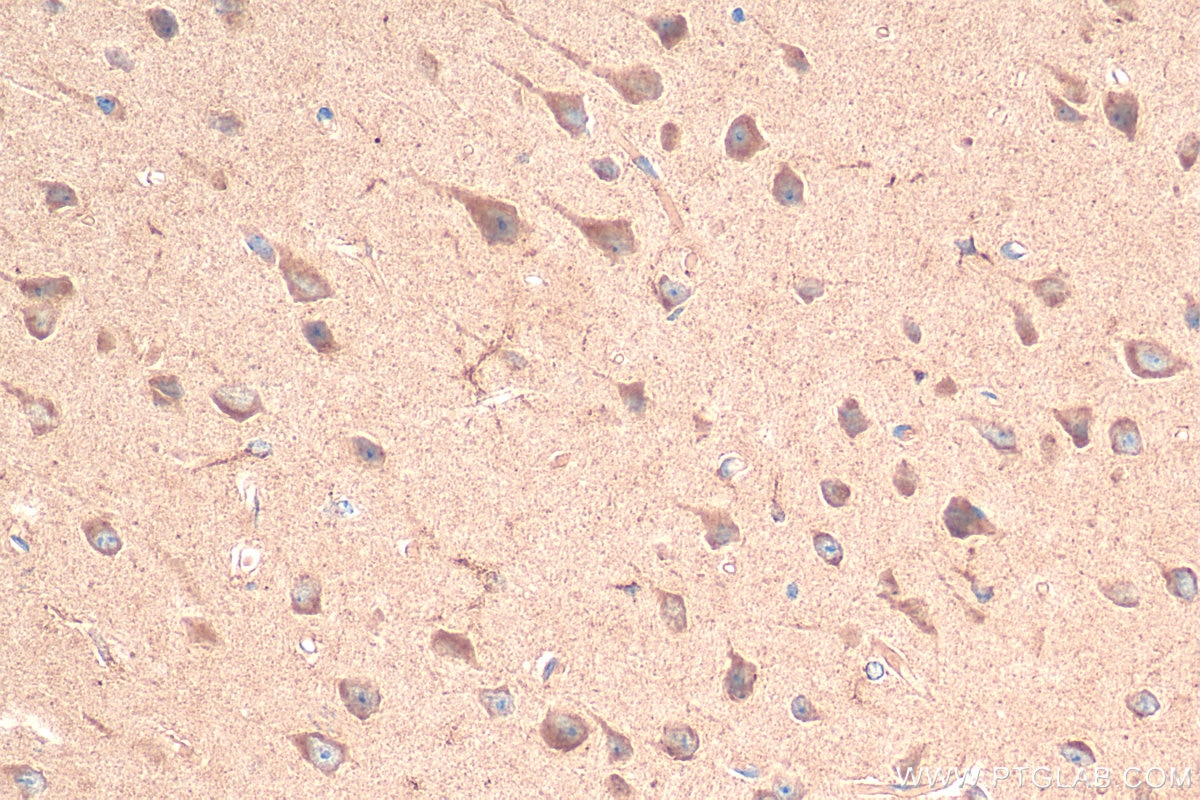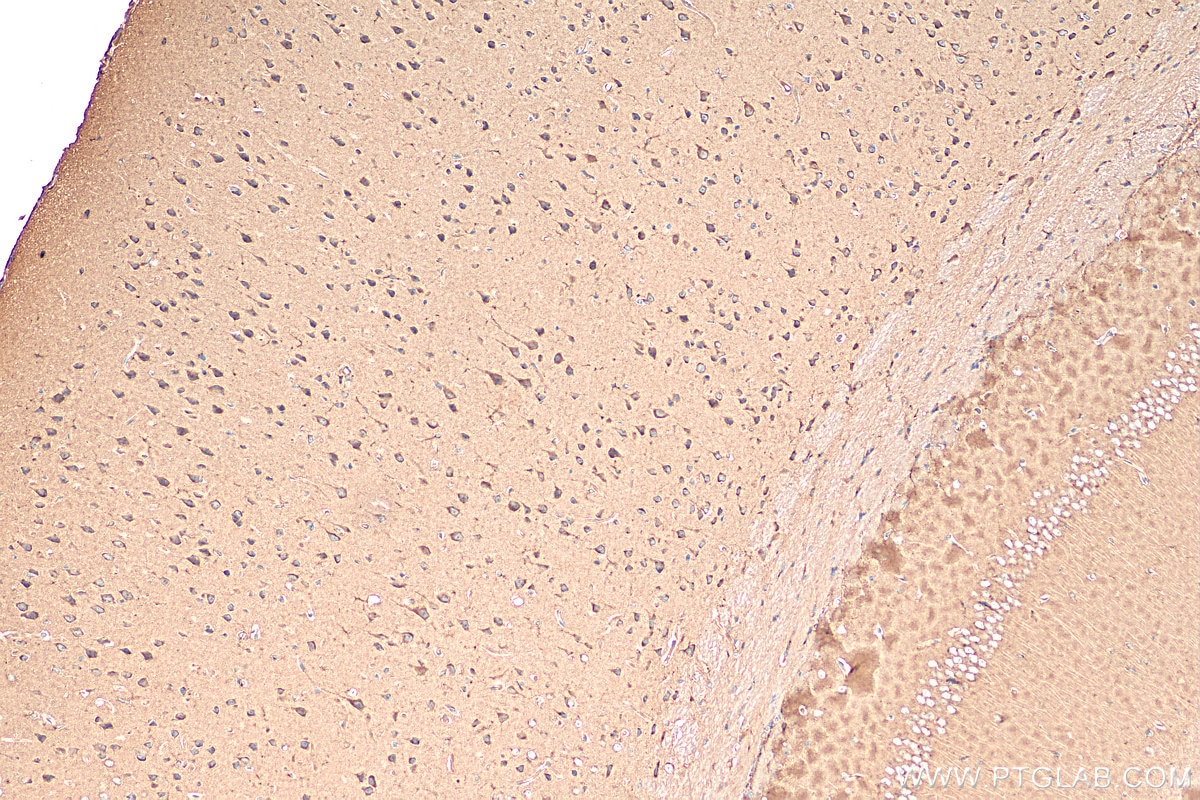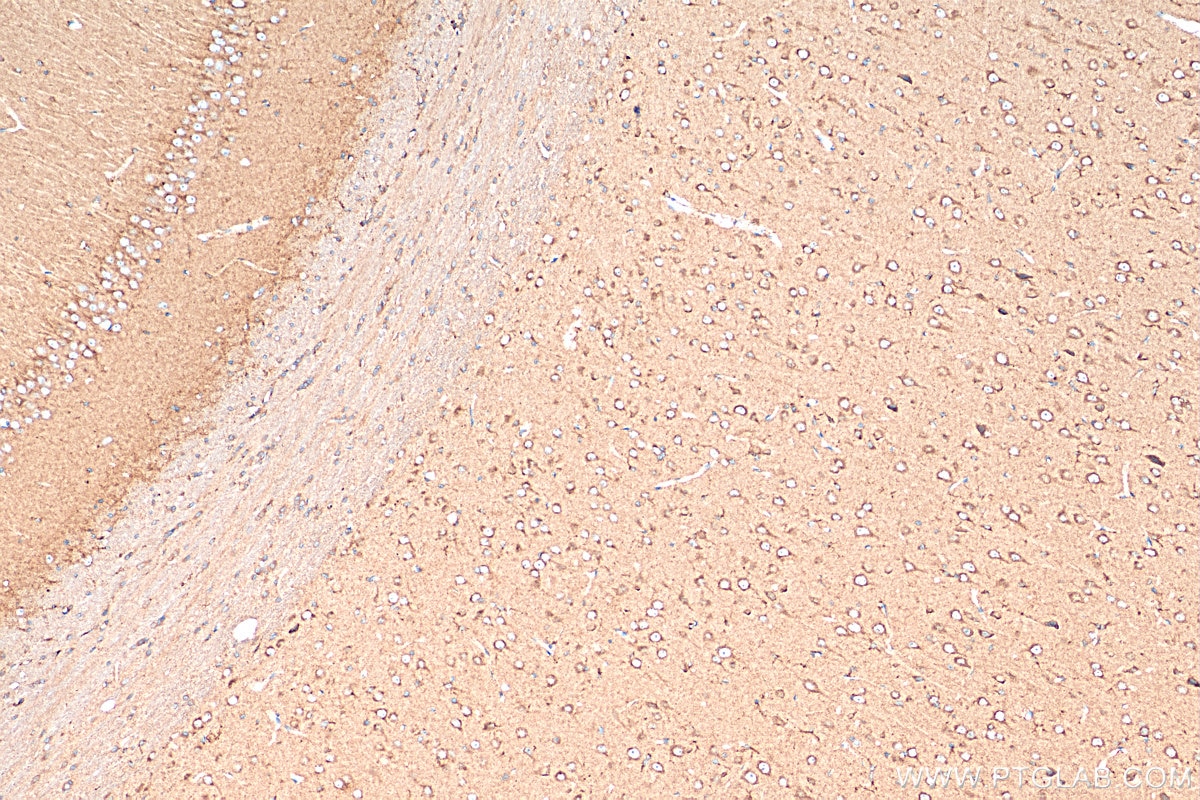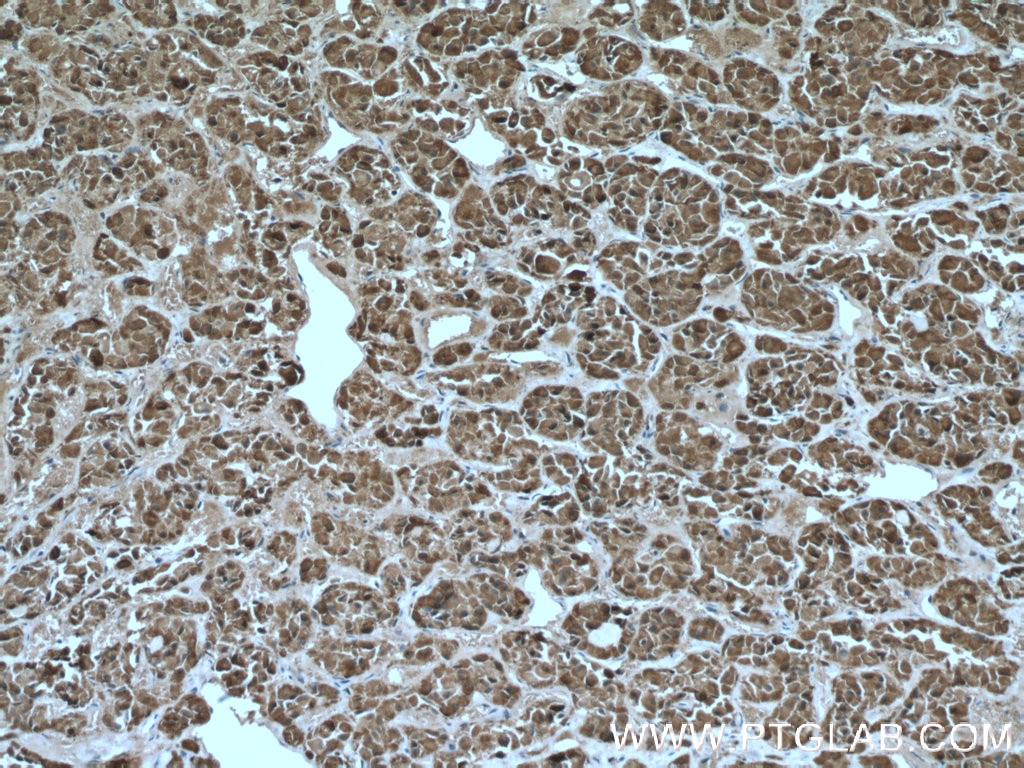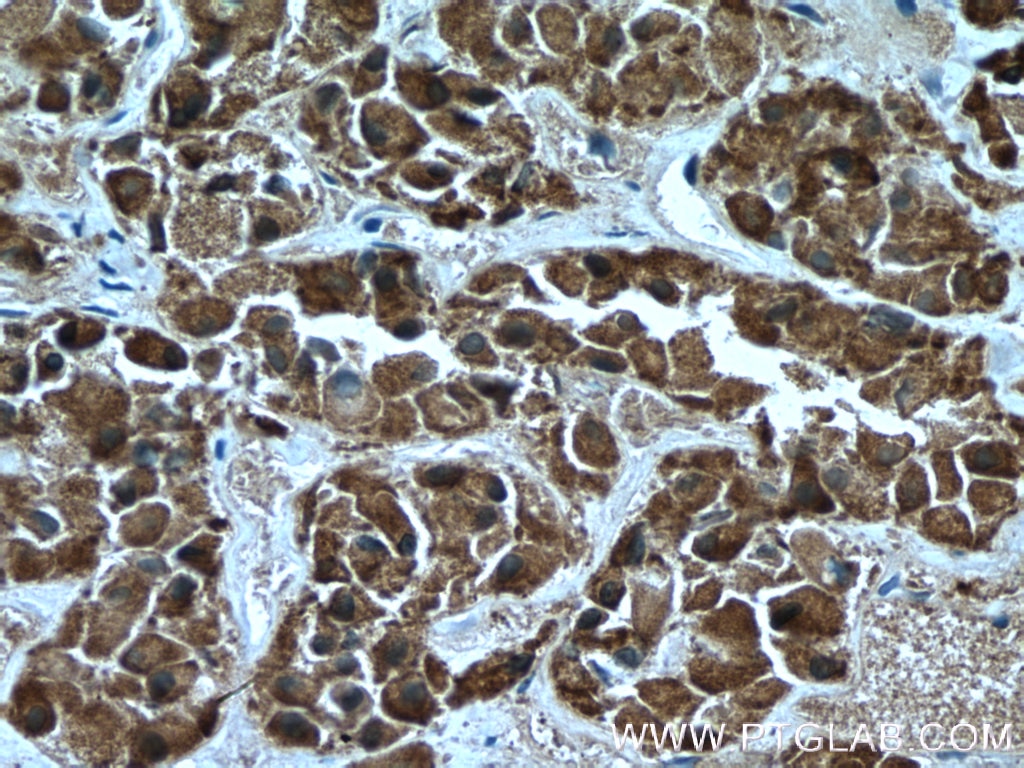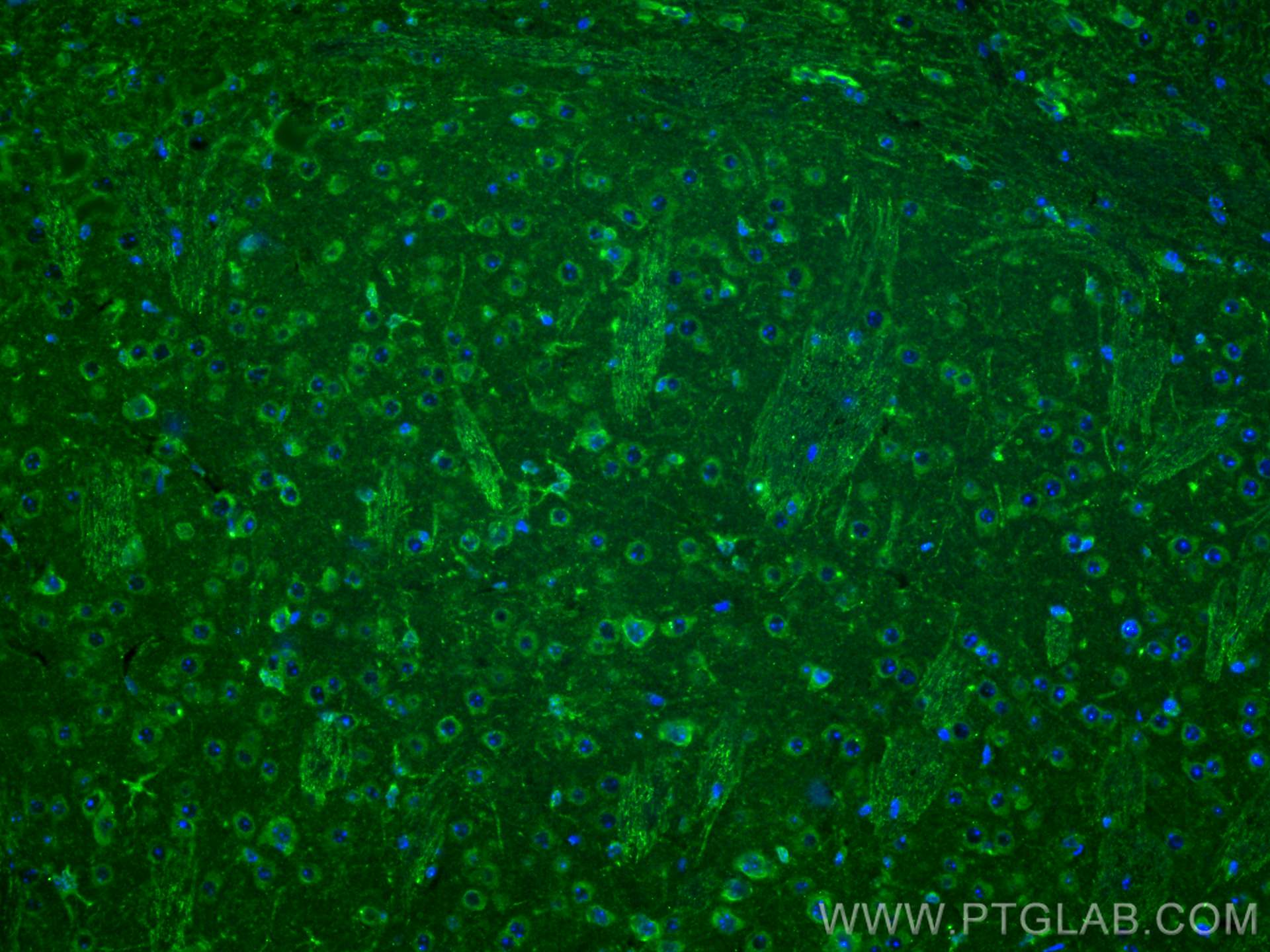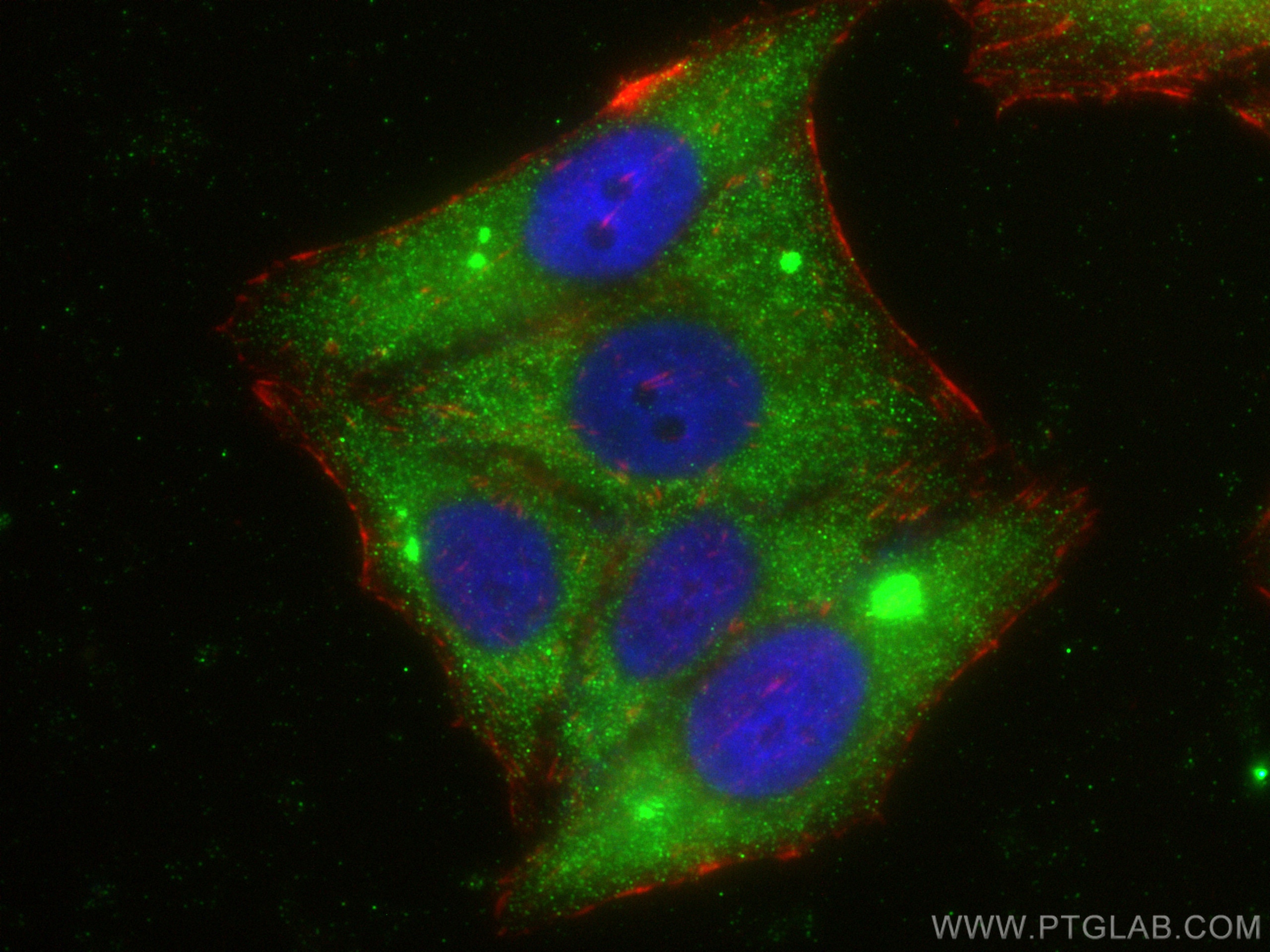Tested Applications
| Positive WB detected in | mouse brain tissue |
| Positive IP detected in | mouse brain tissue |
| Positive IHC detected in | mouse brain tissue, human pituitary tissue, rat brain tissue Note: suggested antigen retrieval with TE buffer pH 9.0; (*) Alternatively, antigen retrieval may be performed with citrate buffer pH 6.0 |
| Positive IF-P detected in | mouse brain tissue |
| Positive IF/ICC detected in | HepG2 cells |
Recommended dilution
| Application | Dilution |
|---|---|
| Western Blot (WB) | WB : 1:500-1:1000 |
| Immunoprecipitation (IP) | IP : 0.5-4.0 ug for 1.0-3.0 mg of total protein lysate |
| Immunohistochemistry (IHC) | IHC : 1:50-1:500 |
| Immunofluorescence (IF)-P | IF-P : 1:200-1:800 |
| Immunofluorescence (IF)/ICC | IF/ICC : 1:50-1:500 |
| It is recommended that this reagent should be titrated in each testing system to obtain optimal results. | |
| Sample-dependent, Check data in validation data gallery. | |
Published Applications
| KD/KO | See 2 publications below |
| WB | See 7 publications below |
| IHC | See 4 publications below |
| IF | See 4 publications below |
Product Information
13710-1-AP targets CPE in WB, IHC, IF/ICC, IF-P, IP, ELISA applications and shows reactivity with human, mouse, rat samples.
| Tested Reactivity | human, mouse, rat |
| Cited Reactivity | human, mouse, rat |
| Host / Isotype | Rabbit / IgG |
| Class | Polyclonal |
| Type | Antibody |
| Immunogen |
CatNo: Ag4647 Product name: Recombinant human CPE protein Source: e coli.-derived, PGEX-4T Tag: GST Domain: 126-476 aa of BC033866 Sequence: FLAQYLCNEYQKGNETIVNLIHSTRIHIMPSLNPDGFEKAASQPGELKDWFVGRSNAQGIDLNRNFPDLDRIVYVNEKEGGPNNHLLKNMKKIVDQNTKLAPETKAVIHWIMDIPFVLSANLHGGDLVANYPYDETRSGSAHEYSSSPDDAIFQSLARAYSSFNPAMSDPNRPPCRKNDDDSSFVDGTTNGGAWYSVPGGMQDFNYLSSNCFEITVELSCEKFPPEETLKTYWEDNKNSLISYLEQIHRGVKGFVRDLQGNPIANATISVEGIDHDVTSAKDGDYWRLLIPGNYKLTASAPGYLAITKKVAVPYSPAAGVDFELESFSERKEEEKEELMEWWKMMSETLNF Predict reactive species |
| Full Name | carboxypeptidase E |
| Calculated Molecular Weight | 476 aa, 53 kDa |
| Observed Molecular Weight | 50-55 kDa |
| GenBank Accession Number | BC033866 |
| Gene Symbol | Carboxypeptidase E |
| Gene ID (NCBI) | 1363 |
| RRID | AB_2083913 |
| Conjugate | Unconjugated |
| Form | Liquid |
| Purification Method | Antigen affinity purification |
| UNIPROT ID | P16870 |
| Storage Buffer | PBS with 0.02% sodium azide and 50% glycerol, pH 7.3. |
| Storage Conditions | Store at -20°C. Stable for one year after shipment. Aliquoting is unnecessary for -20oC storage. 20ul sizes contain 0.1% BSA. |
Background Information
CPE(Carboxypeptidase E) is also named as CPH.It belongs to the peptidase M14 family and is involved in the biosynthesis of peptide hormones and neurotransmitters, including insulin.The deduced 476-amino acid human protein contains an N-terminal signal peptide, followed by a 'pro' sequence, a polyarginine stretch, and 2 potential N-glycosylation sites.
Protocols
| Product Specific Protocols | |
|---|---|
| IF protocol for CPE antibody 13710-1-AP | Download protocol |
| IHC protocol for CPE antibody 13710-1-AP | Download protocol |
| IP protocol for CPE antibody 13710-1-AP | Download protocol |
| WB protocol for CPE antibody 13710-1-AP | Download protocol |
| Standard Protocols | |
|---|---|
| Click here to view our Standard Protocols |
Publications
| Species | Application | Title |
|---|---|---|
Cell Metab Reductive TCA cycle metabolism fuels glutamine- and glucose-stimulated insulin secretion. | ||
Diabetes Translational Factor eIF4G1 Regulates Glucose Homeostasis and Pancreatic β-Cell Function. | ||
Am J Physiol Endocrinol Metab Loss of the Golgi-localized v-ATPase subunit does not alter insulin granule formation or pancreatic islet β-cell function | ||
Brain Pathol Secretory sorting receptors carboxypeptidase E and secretogranin III in amyloid β-associated neural degeneration in Alzheimer's disease. | ||
Neuropharmacology Esketamine mitigates endotoxin-induced hippocampal injury by regulating calcium transient and synaptic plasticity via the NF-α1/CREB pathway | ||
Front Genet Development and Validation of a Novel Gene Signature for Predicting the Prognosis by Identifying m5C Modification Subtypes of Cervical Cancer.
|

